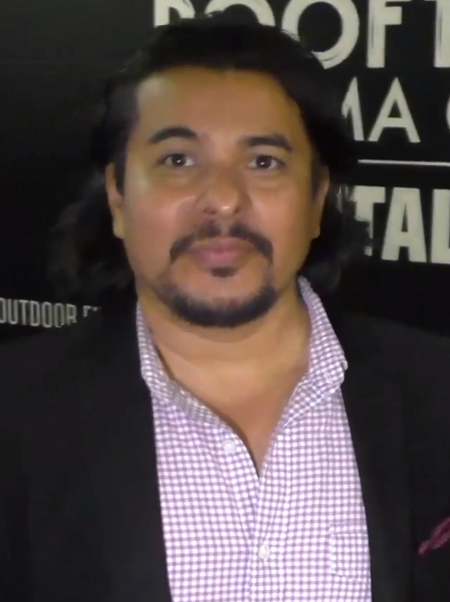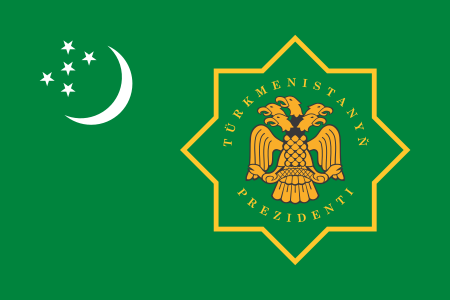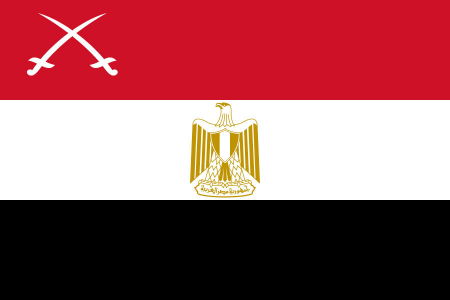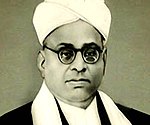1926 Madras Presidency Legislative Council election
| ||||||||||||||||||||||||||||||||||||||||||||||||||||||||||||||||||||||||||||||||||||||||||||||||||
Read other articles:

Натуральные числа от нуля до ста. Составные числа отмечены зелёным. Составно́е число́ — натуральное число, имеющее делители, отличные от единицы и самого себя. Каждое составное число является произведением двух или более натуральных чисел, бо́льших единицы[1]. Все нат�…

Questa voce o sezione sull'argomento attori messicani non cita le fonti necessarie o quelle presenti sono insufficienti. Puoi migliorare questa voce aggiungendo citazioni da fonti attendibili secondo le linee guida sull'uso delle fonti. Jacob Vargas Jacob Vargas (Michoacán, 18 agosto 1971) è un attore messicano naturalizzato statunitense. Indice 1 Biografia 2 Filmografia 2.1 Cinema 2.2 Televisione 3 Doppiatori italiani 4 Collegamenti esterni Biografia Vargas è nato a Michoacán, Messico,…

Timothy Hutton al Toronto International Film Festival nel 2008 Oscar al miglior attore non protagonista 1981 Timothy Tarquin Hutton (Malibù, 16 agosto 1960) è un attore statunitense, vincitore del premio Oscar al miglior attore non protagonista nel 1981 per la sua interpretazione in Gente comune. Indice 1 Biografia 2 Vita privata 3 Filmografia 3.1 Attore 3.1.1 Cinema 3.1.2 Televisione 3.2 Regista 4 Riconoscimenti 5 Doppiatori italiani 6 Note 7 Altri progetti 8 Collegamenti esterni Biografia Na…

Castle in Qazvin Province, Iran Kuchar castleقلعه کوچارGeneral informationTypeCastleTown or cityAlborz CountyCountry IranKuchar castle (Persian: قلعه کوچار) is a historical castle located in Alborz County in Qazvin Province, The longevity of this fortress dates back to the Historical periods after Islam.[1][2] References ^ Encyclopaedia of the Iranian Architectural History. Cultural Heritage, Handicrafts and Tourism Organization of Iran. 15 February 2021. Archiv…

Северный морской котик Самец Научная классификация Домен:ЭукариотыЦарство:ЖивотныеПодцарство:ЭуметазоиБез ранга:Двусторонне-симметричныеБез ранга:ВторичноротыеТип:ХордовыеПодтип:ПозвоночныеИнфратип:ЧелюстноротыеНадкласс:ЧетвероногиеКлада:АмниотыКлада:Синапсиды…

Ця стаття потребує додаткових посилань на джерела для поліпшення її перевірності. Будь ласка, допоможіть удосконалити цю статтю, додавши посилання на надійні (авторитетні) джерела. Зверніться на сторінку обговорення за поясненнями та допоможіть виправити недоліки. Матер…

This article may require cleanup to meet Wikipedia's quality standards. The specific problem is: song titles should use quote marks, not italics, per MOS. Please help improve this article if you can. (June 2020) (Learn how and when to remove this message) The best performing song of the year, Happy, was released by American singer Pharrell Williams New Zealand rapper Savage released the top performing song by a New Zealand artist in 2014, with the song Freaks released alongside Australian DJ Tim…

土库曼斯坦总统土库曼斯坦国徽土库曼斯坦总统旗現任谢尔达尔·别尔德穆哈梅多夫自2022年3月19日官邸阿什哈巴德总统府(Oguzkhan Presidential Palace)機關所在地阿什哈巴德任命者直接选举任期7年,可连选连任首任萨帕尔穆拉特·尼亚佐夫设立1991年10月27日 土库曼斯坦土库曼斯坦政府与政治 国家政府 土库曼斯坦宪法 国旗 国徽 国歌 立法機關(英语:National Council of Turkmenistan) 土�…

United Nations resolution adopted in 2006 UN Security CouncilResolution 1729Qunaitra in the Golan HeightsDate15 December 2006Meeting no.5,596CodeS/RES/1729 (Document)SubjectThe situation in the Middle EastVoting summary15 voted forNone voted againstNone abstainedResultAdoptedSecurity Council compositionPermanent members China France Russia United Kingdom United StatesNon-permanent members Argentina Rep. of the Congo Denmark Ghana Greece …

NASA crewed Venus mission concept Artist's rendering of a NASA crewed floating outpost on Venus HAVOC redirects here. For other uses, see Havoc. High Altitude Venus Operational Concept (HAVOC) is a set of crewed NASA mission concepts to the planet Venus. All human portions of the missions would be conducted from lighter-than-air craft or from orbit.[1] A similar concept, the Floating Islands of Venus, was proposed by Soviet engineer and sci-fi writer Sergei Zhitomirsky in 1971.[2]…

Byzantine Greek redirects here. For the ethnic group, see Byzantine Greeks. Medieval stage of the Greek language This article may be too technical for most readers to understand. Please help improve it to make it understandable to non-experts, without removing the technical details. (June 2020) (Learn how and when to remove this message) Medieval GreekByzantine Greek, RomaicῬωμαϊκήRhōmaïkḗRomaïkíRegionEastern Mediterranean (Byzantine Empire) : Southern Balkans, Asia Minor, Byz…

O Sistema de Posicionamento Global da Força Espacial dos EUA foi o primeiro sistema global de navegação por satélite e o primeiro a ser fornecido como um serviço global gratuito. Coordenadas com um GPS com bússola e altímetro integrado Sistema de navegação por satélite (sat-nav) são sistemas que estabelecem o posicionamento geo-espacial autônomo através do uso de satélites artificiais. Estes sistemas permitem que receptores sobre a superfície terrestre possam determinar a sua loca…

Chinese anti-communism Part of a series onConservatism in China Ideologies Authoritarian Chiangism Communitarianism Cultural Dai Jitao Thought Monarchism Nationalist Han chauvinist Ultra Neoauthoritarianism Social Traditionalist Confucianism Neo Legalism Ultra Principles Ancestral worship Asian values Authority Duty Elitism Exceptionalism Familialism Filial piety Hierarchy Imperialism Sinicization Irredentism Unification Law and order Loyalty Mandate of Heaven Meritocracy One China Patriotism Si…

French sculptors Jan and Joël Martel on the inauguration of their monument to Claude Debussy in 1932. Jan Martel (5 March 1896 – 16 March 1966) and Joël Martel (5 March 1896 – 25 September 1966) were French sculptors and identical twin brothers. The twins were born in Nantes and were among the founding members of Union des Artistes Modernes (UAM).[1] Their works include ornamental sculptures, statues, monuments and fountains displaying characteristics typical of the Art Deco and Cu…

American TV series or program Next Step Realty: NYCGenreReality televisionStarring Matt Bauman Blair Brandt Anna Cogswell Brianna Coughlan David G. Ghysels III Edward “Field” Hucks Michaela Lalanne Victoria Scott Margit Weinberg Erin Wilson Danielle Rossen Michael Driscoll Country of originUnited StatesOriginal languageEnglishNo. of seasons1No. of episodes10ProductionExecutive producersDanielle RossenMichael DriscollProduction companyLincoln Square ProductionsOriginal releaseNetworkFreeformR…

الدوري المولدوفي الوطني 2017 تفاصيل الموسم الدوري المولدوفي الوطني النسخة 27 البلد مولدوفا التاريخ بداية:8 يوليو 2017 نهاية:26 نوفمبر 2017 المنظم الاتحاد المولدوفي لكرة القدم البطل نادي شريف تيراسبول مباريات ملعوبة 90 عدد المشاركين 10 أهداف مسجلة 230…

أقصى الحدود التي بلغتها الخلافة الراشدة في عهد عثمان بن عفَّان سنة 654م. كانت دولة الخلافة الراشدة مقسمة إلى عدّة ولايات ذات حدود غير ثابتة، فقد كانت تتغير بين الحين والآخر وفق توسع الدولة. واختلفت سياسات الخلفاء الراشدين وطرق تعاملهم مع شؤون الدولة فيما بينهم، فكانت لكلِّ من…

Statutory body of the Egyptian Armed Forces SCAF redirects here. For the football club, see Stade Centrafricain. Politics of Egypt Member State of the African Union Member State of the Arab League Constitution (history) Government President (list) Abdel Fattah el-Sisi Prime Minister (list) Mostafa Madbouly Cabinet Mostafa Madbouly's ministry Legislature Parliament House of Representatives Speaker (list) Hanafy El Gebaly Senate Judiciary Supreme Constitutional Court Chancellor Saeed Marie Adminis…

1934–1943 Italian colony in North Africa LibyaLibia (Italian)ليبيا (Arabic)Lībyā1934–1943 Flag Coat of Arms Motto: Per l'onore d'ItaliaFor the honour of ItalyAnthem: Marcia Reale d'OrdinanzaRoyal March of Ordinance Marcia RealeItalian Libya in 1941: Libya Italian-controlled territory Kingdom of Italy StatusColony of Italy[1]CapitalTripoliCommon languagesItalian, Arabic (official)Libyan Arabic, Berber languages, Domar…

Type G Role Experimental aircraftType of aircraft Manufacturer Avro First flight August 1912 Number built 1 The Avro Type G was a two-seat biplane designed by A.V. Roe to participate in the 1912 British Military Aeroplane Competition. It is notable for having a fully enclosed crew compartment and for being the first aircraft to have recovered from a spin in front of witnesses.[1] Design and development The Avro Type G was a two-seat, two-bay biplane with a fully enclosed crew compartment…

